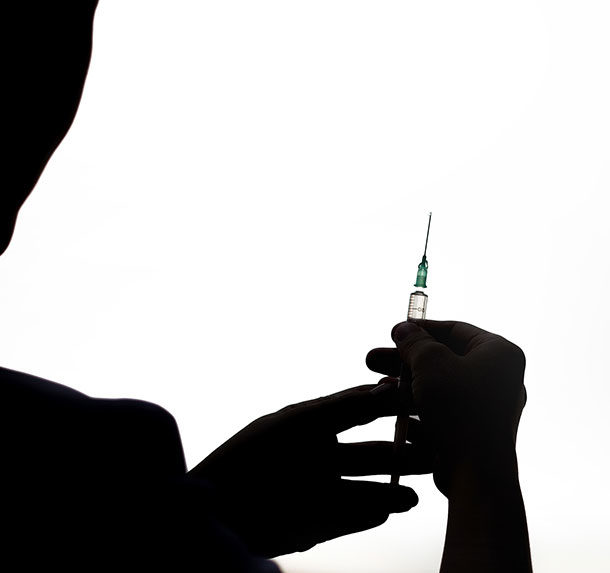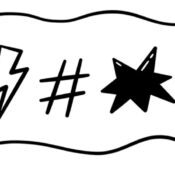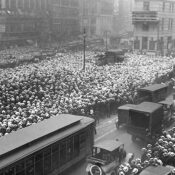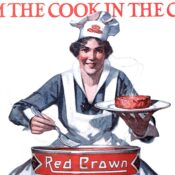Heroin was hailed as a wonder drug at the turn of the 20th century. First synthesized in England in 1874 and trademarked and sold commerically by the Bayer pharmaceutical company starting in 1898, the drug was aggressively marketed as a “non-addictive” painkiller and cough suppressant. It was even touted as a cure for morphine addiction. By 1899, Bayer was producing about a ton a year, but there were increasing reports of patients becoming addicted, and by 1913, Bayer withdrew Heroin from the market.
The Post began reporting on the problems of drug addiction beginning in the 1800s, observing as early as 1872 that it afflicted “all classes of society, from the lady of Fifth Avenue to John Chinaman of Baxter Street.”
An Exaltation of Consciousness
The word heroin is derived from the word hero, because when the drug was first discovered, it was observed that the person taking it, or to whom it was administered, experienced an exaltation of consciousness in which he imagined himself capable of heroic action. To him nothing seemed impossible. …
Chemists, alas, are not of necessity moralists or psychologists, and in their quest for substances to relieve human suffering often fail to look ahead to the possibility of increasing human misery or wrongdoing. In the case of heroin they summoned a genie from their bottle which defies both them and the forces of organized society to put it back. …
—“Heroin Heroes” by Rex. H. Lampman, September 20, 1924
Forget You Have a Son
I am the mother of a 19-year-old boy. To me, he is handsome, gifted, understanding — my whole world. Yesterday I was told, “Mrs. B., you’d better forget you have a son.” You see, my son is a drug addict. It has taken me three years to learn to face that fact and live with it. If my story helps some other parent, perhaps the telling will help me to sleep at night.
—“My Son Is a Dope Addict,” as told to Cameron Cornell, January 26, 1952
Drugs Are Everywhere
One of the most extraordinary aspects of the new suburban drug kick is the availability of the drugs themselves. “They’re like water,” said a teenage boy from suburban Los Angeles. “You don’t have any trouble getting them. You can practically figure every one of the kids in school who has something or can get it for you pretty quick.”
—“Dope Invades the Suburbs” by Robert P. Goldman, April 4, 1964
She Was from a Good Family
It was a typically shoddy Southern California beach motel, pseudo-Brasilia in architecture, and the paint was peeling from the door of Room No. 8. Inside, the police hoped, was a heroin addict they wanted. Al, a plainclothes cop, had a search warrant, and he nodded to the sullen motel owner, who opened the door with his passkey. A blonde girl in Capri pants was lying on the filth-strewn floor. She could not have been more than 14 years old. Her eyes were blank and her fingers clawed at the figures in the design of the linoleum. “I guess the hype got away,” Al said. The “hype,” police slang for a heroin addict, was a middle-aged man with whom the 14-year-old girl had been living. Just eight months before, I learned, the girl had been a normal, healthy high-school freshman from a good family — until a schoolmate introduced her to drugs. Now she began to tremble violently where she lay in a pool of her own sweat and vomit. Then her eyes closed. “Wiped out,” Al said.
—“The Thrill-Pill Menace” by Bill Davidson, December 4, 1965
Become a Saturday Evening Post member and enjoy unlimited access. Subscribe now




Comments
In the course of my research, on another historical topic, I came across a newspaper articles dealing with drug use. One concerned theft to buy drugs — the year 1905. A second having to do with Justice Thayer of Sacco and Vanzetti fame. The justice in 1921 refused to incarcerate a drug addict stating — from the bench — that addiction is not a criminal but a medical problem, in consequence he remanded the addict to a hospital for treatment. It comes as surprise to most people that drug addiction has been a problem for at least as long as mankind realized that certain substances caused euphoria.
Stop the drug war with objective of shutting down the black market. The drug war has failed. The drug war is driving the problems, not fixing them. Decriminalization/legalization is necessary, it needs to be backed up with public health announcements explaining exactly why it is needed. Its not in any way condoning the abuse of addictors, it is done bc the alternative, the drug war, has made things infinitely worse on almost every level, to include making drugs abundantly available to any & all that wants them.
We need to pull LE out of the drug biz – that will free up a lot of resources currently chasing their collective tails. When the laws create more harm and cause more damage than they prevent, its time to change the laws. The $1 TRILLION so-called war on drugs is a massive big government failure – on nearly every single level. Its way past time to put the cartels & black market drug dealers out of business. Mass incarceration has failed. We cant even keep drugs out of a contained & controlled environment like prison.
We need the science of addiction causation to guide prevention, treatment, recovery & public policies. Otherwise, things will inexorably just continue to worsen & no progress will be made. Addiction causation research has continued to show that some people (suffering with addiction) have a “hypo-active endogenous opioid/reward system.” This is the (real) brain disease, making addiction a symptom, not a disease itself. One disease, one pathology. Policy must be made reflecting addiction(s) as a health issue.
The war on drugs is an apotheosis of the largest & longest war failure in history. It actually exposes our children to more harm & risk and does not protect them whatsoever. In all actuality, the war on drugs is nothing more than an international projection of a domestic psychosis. It is not the “great child protection act,” its actually the complete opposite.
The lesson is clear: Drug laws do not stop people from harming themselves, but they do cause addicts to commit crimes and harm others. We need a new approach that decriminalizes the disease. We must protect society from the collateral damage of addiction and stop waging war on ourselves. We need common sense harm reduction approaches desperately. MAT (medication assisted treatment) and HAT (heroin assisted treatment) must be available options. Of course, MJ should not be a sched drug at all.